Breaking Down the “Tech Stack” for Contractors - PODCAST TRANSCRIPT
June 5, 2024 at 12:00 p.m.Editor's note: The following is the transcript of a live interview with Pam Torrey of Ingage. You can read the interview below or listen to the podcast!
Intro: Welcome to Roofing Road Trips, the podcast that takes you on a thrilling journey across the world of roofing. From fascinating interviews with roofing experts to on-the-road adventures we'll uncover the stories, innovations and challenges that shape the rooftops over our heads. So fasten your seatbelts and join us as we embark on this exciting Roofing Road Trip.
Karen Edwards: Hello and welcome to another episode of Roofing Road Trips. My name's Karen Edwards and I'm really excited for this conversation today because it's going to be all about the tech stack and how contractors, we just want to help you understand the different types of technology that are out there and how to use it and how to get into implementing this technology in your business. So my guest today is Pam Torrey from Ingage. Pam, welcome. I'm really excited to have this conversation.
Pam Torrey: Yeah, I'm happy to be here.
Karen Edwards: Tell us a little bit about yourself.
Pam Torrey: Yeah, so I am the director of marketing at Ingage. I've been here for just over four and a half years at this point. Prior to joining Ingage, I did marketing and lead generation and event management for a FinTech company based in Chicago where I live. And then before that I did B2B sales at Apple for a couple of years. But my background is actually very non-traditional. I have zero degrees in marketing or in business or anything like that. I have none of the things that most people would look for in a marketing hire. I actually have a Bachelor of Music and Master's of Music in vocal performance with a specialization in opera.
So odd background to get here, but it actually does serve me really well because I do all of these podcasts, all these webinars. I do a lot of presenting about our company. So it actually does serve me really well, but it leads into something I really love about this industry, which is in home improvement. Nobody cares where you came from, they just care that you're here and that you're showing up and doing a good job. I've met so many people who have backgrounds as professional athletes, as teachers, doing sales in different capacities, doing other jobs who just ended up here because it was a good industry to be in and have been welcomed. So really enjoyable to be here.
Karen Edwards: It's a great industry and everyone is welcome. You are so right with that. I love that. So tell us a little bit about Ingage and the technology that it offers to contractors.
Pam Torrey: Yeah, so we are the industry-leading sales enablement presentation platform for home improvement and home services. So what that means is that we help you to create dynamic, interactive, engaging presentations that feature things like progressive disclosure through interactivity and native video that works offline. We help you to share that content out to the people who need it, making sure everyone is always up-to-date with the latest presentation through our cloud-based platform. And then we help you to measure the impact of your content and then coach every rep to be your best rep using Rich Analytics on the back end.
We have features such as Session Compare. You can compare reps to each other and what they're doing in the home. We also have a virtual ride along feature that allows you to pull up a given sales appointment and you can actually see what the rep did through the whole appointment on their screen, what pages were they on, what order did they present those pages in, what did they click on, how long did they spend on those pages. So if you have mandated content that you want your reps to show, it's really a great way to be able to hold them accountable and see what those top sales reps are doing to help lift all of your reps up to that level.
Karen Edwards: Wow, that's fantastic. And is this something that allows consistency across the organization and the reps using the same presentation?
Pam Torrey: Yes. That is actually one of the primary value drivers to using a platform like Ingage versus another presentation software is that when you make an update to your presentation, it can be really hard to ensure everyone is using that updated version. At my last job when I was at that finance company, I was in charge of making our sales presentations and I would spend hours meticulously putting together these gorgeous presentations in Adobe InDesign and then I would export them to PDF, upload them into our Google Drive and say, this is the presentation you all need to be using.
And I had to make three different versions 'cause we had offices in the Americas, in Europe and in Asia. I made three versions of this presentation. I would go in and watch the sales calls and find out that they were using a PowerPoint that was from three brand guidelines ago that had incorrect product information, incorrect customer accounts, incorrect branding. The colors were wrong-
Karen Edwards: Oh, no.
Pam Torrey: The logo was wrong, and I couldn't do anything about it because they had downloaded that onto their computers and that's what they were using to present. So our software takes the guesswork out of that. Once your employee has started presenting on Ingage, if you make that update, if your manufacturer makes an update to content, it just pushes out and they'll have to use the latest version.
Karen Edwards: Wow. That is a marketing person's nightmare. What you just did was making me cringe.
Pam Torrey: Oh yeah, yeah. That honestly, when I first heard about Ingage and when I started the process of meeting with the leadership at this company to move over to Ingage, one of the top value drivers for me was that I had gone through the pain that our customers deal with on a daily basis and I never wanted to experience that again.
Karen Edwards: Wow. Yeah, I can totally relate to that. So let's just back up a few steps and talk about this tech stack because it' become a buzzword and I see people online, "What's your tech stack? What's your tech?" Well, let's start with what is a tech stack?
Pam Torrey: So a tech stack is really just the technology that you use in your business to better serve your customer and your team. At the end of the day, if a piece of technology in your business is not either making things easier and better for your customer's experience or making things better for your internal team's experience, I don't know why you have it. So that's how I like to think about a tech stack. It is the technology that you assemble to enable everybody to do their jobs better, to enable your business to run more efficiently. And if we think about it like that instead of from this perspective of, oh my God, I need to have a CRM, I need to have sales software, I need to have measurement software, I need to have communication software, I need a texting platform, I need. No, what is going to make your business run better and your customer experience better? That's a tech stack.
Karen Edwards: Wow. Yeah, that's so true because so many people I think get overwhelmed with, wow, what do I need? You need to start with what your pain points are I guess, and then turn to a technology solution that can solve them. So you mentioned CRM in that, let's start there because I mean that's really how you manage your customer relationships.
Pam Torrey: Yes, it's how you manage your customer relationships. It's how you know who your customers are that at the end of the day, a CRM is how you know who you're talking to and it is definitely the first line of defense. If you don't have a CRM in place, you shouldn't be talking to any of these other tech providers, including Ingage. I don't want to talk to you until you have a CRM in place because that's the core of your business. It is how you know who your customers are, it's how you can talk to them. It's how you're going to maintain all of those relationships and it's how you're going to have the data to be able to book your in-home sales appointment to do your Ingage presentation.
Karen Edwards: So when it comes to a CRM, there are a lot of options on the market.
Pam Torrey: So many.
Karen Edwards: And I always try to say I don't want to recommend specific vendors or providers, but what kind of things should a contractor consider when they are choosing a CRM?
Pam Torrey: Yeah, there are a few different things to think about. Number one is to think about the trajectory of your business. Are you on a high growth plan or are you looking to just really provide for your family and have this small family-owned business that's going to be self-sustaining for however long you want to be in this industry? Those are two different pathways and both are valid and both are perfectly fine for a contractor to explore, but they mean that you're probably going to look for different things from your CRM. Also, what products do you sell? That's something to think about. Do you primarily sell one manufacturer's products or do you sell a lot of products? Are you looking for an industry-specific software because you really want to make sure that you are set up for success for just home improvement? Or do you have somebody on your team who is really versed in technology and might be able to handle a non-industry-specific software and customizing it to your needs?
Those are some of the questions that I would ask when looking at a CRM and there are so many great options on the market. I think a one-size-fits-all option that works for most people would be a HubSpot because HubSpot is super easy to configure. We are actually a HubSpot shop at Ingage. I built our HubSpot instance and we've grown over the years with it. We're now on an enterprise plan. We started off on a small professional plan and it really is flexible and can grow with you. It's super easy to add properties, it's easy to integrate it to other technology. It's a great marketing automation tool.
So if you have no clue what you're doing with marketing automation, HubSpot can actually help you out there. But it does require a decent amount of configuration for home improvement because it's not industry specific. So if you're one of those high growth companies that's got technology staff, HubSpot could be a great option for you. If you're looking more at something that's like home improvement specific, we have just a plethora of options that are great out there. There's the MarketSharp improveit 360 duo. MarketSharp is great for the smaller contractors out there who are like, I don't know where to start. I need a great solution that can help get me to that next level. MarketSharp is going to be that solution for you.
Improveit 360 is for those slightly larger contractors who are really looking to scale their business, and what's great is they're owned by the same company, so one can just grow into the other. There's Job Nimbus out there. I know for a lot of our Owens Corning contractors, Job Nimbus is recommended by Owens Corning as a great place to start. So that's always an option. There are just so many CRMs that exist in this industry, but those are just some that we've worked with in the past who have been really good partners and who also work with our manufacturer networks. That's a huge consideration for a CRM.
Karen Edwards: Oh, yeah. Yeah. And I think that's also a good place to start is to look to your manufacturers because many of them do have partnerships and they do have, maybe they're integrated with their products and their SKUs and all that stuff too. So when you're taking it to the next step, they do a lot of work for you.
Pam Torrey: CRMs are one of the most daunting softwares to have to set up. Again, I say this as someone who's done it. I have set up a CRM for a company. I built it out. I built out our marketing automation. I built out our deal tracking, all that deal automation. It's hard. It's hard to do. It's hard to stay on top of, and it can feel like an almost insurmountable task. Having those manufacturer relationships pre-baked in with your CRM can really make a big difference. I mean, it just takes something off of your plate. And we know that contractors are swamped. They're dealing with tons of competition. They are trying to run a business. We have a customer who I always go back to. He's a gentleman who signed with us back in 2020, and he in his onboarding was like, I'm a roofer. I'm not a designer.
And I always think about that when I think about technology in this business is how can we solve the problem for the guy who's a roofer? He's not a designer, he's not into technology. He knows he needs it, but he's not a specialist in those things. He's a roofer, he's a specialist in roofing. So how do we serve that customer? And if we're not serving that customer with the technology, then we're not doing our job. And at the end of the day, when you're looking for a CRM, it has to serve the purpose of your company, which is roofing or siding or windows or whatever it is you're doing, your exterior contracting. So I know that these tools can, and yeah, definitely check with your manufacturer to see who they recommend.
Karen Edwards: Yeah. Yeah. Technology's come so far so quickly and it's getting smarter. It's making it easier for the end user.
Pam Torrey: We hope. We hope it's getting smarter at least.
Karen Edwards: Okay, so one of the things that I always wonder about, okay, we've got the CRM. We started with that. What next? We've got to do estimates. We've got to do a sales presentation, so what's the next step?
Pam Torrey: So I would say the next step would probably be getting your in-home sales software in hand. And so you want a piece of software that can be a repository for all the information that you're collecting in your needs assessment. If you're not doing a needs assessment, Lord, please just do a needs assessment. You need a repository for all of that information to make sure that your estimates are going to be accurate. So you need to look for an in-home sales software that can handle the data collected in the needs assessment. It can pull in the data from your CRM to make sure it has accurate information about the location of your customer and any information about what additional costs might be on top of the products you're selling.
So like sales tax, permitting costs. So if there are additional costs that need to be aligned, you want to make sure that it's connected to that CRM, so you're getting that data pulled in. You want a tool that's going to have all your products loaded, that it's configurable, it's going to easily have those products in there. You want something that's going to connect to your financing tools. Again, if you're not presenting financing to every single customer, we need to have a conversation because you should be presenting financing as an option to every single customer. Easiest way to do that is to have it baked into your in-home sales software tech stack, and you need a tool that's going to allow you to turn out accurate estimates and sign contracts. So if your in-home sales software application can't do those five things, I wouldn't use it. And so you're going to want to assess those.
Luckily for us, we have so many tools in this industry that can do that. Again, depending on your manufacturers, they may have relationships with some of these platforms. I know Owens Corning, for example, is a really strong relationship with SalesPro through Leap. That's a software that they recommend. Some of the other softwares out there would be like Paradigm Vendo, would be One Click Contractor. There's like Ruffle and Roofr for specifically roofing-based contractors. There are so many options on the market, but you are going to want to, as a sales leader or business owner or marketing leader, be able to really look at those five pieces of functionality for an in-home sales software and make sure that the technology you're choosing meets those needs.
I would recommend that you check with your manufacturers on this one just because it is an incredibly painful process to onboard one of these technologies. They would tell you that themselves. It's a hard technology to onboard. If your manufacturer already has products loaded it's just going to make your day so much easier, and you'll know too that it's going to integrate with the other things that are in your tech stack. And then obviously as part of that in-home sales software, you're going to want to have a great presentation and that's where we come in. Fortunately for our customers, we're pretty agnostic. We can integrate with most of these softwares through a deep link. So for example, if you're in SalesPro, you go to the resources section. Ingage can live right there.
Karen Edwards: Nice.
Pam Torrey: And all you do is just click on the link. It'll open up your Ingage and open up the presentation that your team is going to start with. Usually it's a company story, so you would just click on that. It'll take your rep right into Ingage, and they can just present from there. And then there's a recall button within Ingage that'll take you right back into SalesPro. It's the same functionality for a One Click or a Paradigm Vendo or any of the other softwares. So we live right within that process. And the other thing to look for when you're talking about sales presentations is again, your manufacturer content. I am such a strong proponent of talking to the people who create content for you 'cause I know a lot of our customers in the past have relied on brochures from manufacturers. They've relied on printed materials. Manufacturers don't really want to print stuff anymore.
Karen Edwards: Or send out sample boards.
Pam Torrey: No. Well, I mean, I think samples are still a really important part of the conversation. If you can have them, you should, but they don't want to print brochures anywhere because they're outdated as soon as they print and ship them.
Karen Edwards: That's true.
Pam Torrey: The cost of paper is off the charts. We actually have some customers who were, their printing process required paper that was shipped internationally, and it was so expensive to get the paper shipped in, and it was so awful dealing with customs that things were delayed by two or three months as they were getting their collateral shipped in. By the time they got the stuff out to their dealers, it was outdated. That's honestly how long it was taking. And so with a digital platform, your manufacturers are able to keep you updated all the time. So again, I'm just going to keep harping on Owens Corning as an example because I've worked so closely with them and their team there.
So when they update the shingle of the year, when they update that color of the year, it's updated across all of the Ingage presentations. Somebody on Julie's team at Owens Corning puts the new color in and they press publish-
Karen Edwards: And there it is.
Pam Torrey: And those changes go out to everybody and everybody has the new color. Maybe they update one of the PDFs in their sales presentation from Ingage. Great. It's pushed out to everybody. It's just going to make... I would look for a platform that's cloud-based that's going to be something your manufacturers are using. It's going to be easily updatable and configurable for you as a contractor and is going to connect to the software that you're using in the home. So when you're looking at that in-home sales tech stack, those are the things I would really think about.
And then from your sales software, you can look at measurement tools, photo capture tools. They're going to integrate with a lot of things out there like the company cams, the hovers, the eagle views of the world. It's going to depend on what you sell, what software you might want to go with. Some of them are going to be better suited for people who primarily do roofing. Some will be really suited for general exterior contractors, for those of you who do interiors as well, maybe you do bathrooms, you might have some different considerations to take into account.
Karen Edwards: Right. Yeah. I-
Pam Torrey: They're going to want to really think about that.
Karen Edwards: I like starting with the manufacturer because they work with contractors around the country.
Pam Torrey: They do.
Karen Edwards: They know can see what kind of business you are and say, "I know contractors doing similar things to what you're doing, have found success with these tools." Now that leads me-
Pam Torrey: They talk to so many people, it's a wealth of knowledge.
Karen Edwards: They do. They do. It's great. It sounds great. We're going to get technology in our team's hands. What if the team doesn't want to use it? What are some of the challenges that you have to think about in getting your team to adopt this technology?
Pam Torrey: Buy-in can be really hard to get, especially if you have a seasoned team. If you have a team that's been doing this for a long time, a rep who's been out there 15, 20 years, they have their pitch book down. They know what they're doing. They might be a hard sell on getting them to use this technology. So we have a few tactics that generally work pretty well. Number one is have them be part of the process. So when you're implementing Ingage, we actually recommend that you pick one of your top sales reps and work with them to help create the content and have them pilot it, have them take it out in the field and run appointments with it before you roll it out to everybody else because that way you have the social proof behind it.
We talk about this with homeowners all the time, that homeowners want to do what their neighbors are doing. Your sales reps want to do what the other successful reps are doing.
Karen Edwards: True.
Pam Torrey: And so just apply the social pressure that they apply to customers, to your internal team. Get their buy-in, have them help you with building the content. Then when you're ready to roll it out, you can do that training. You have somebody's actual numbers to back it up. This is just from an Ingage perspective, but our contractors typically see somewhere between a seven to 10 point increase in their close rate using Ingage. They see somewhere between around a 12 point increase in average ticket is usually right in the middle. So if you have a rep who has started using Ingage and has seen an uptick, even five points in his close rate or three to seven points in his average ticket, that's real money in the rep's pocket selling these large products, selling these expensive products, that's real money in their pocket and they can be that person who says, "Not is this great for the customer experience. Not only is this good for our business, it's good for my bottom line as a sales rep."
Karen Edwards: That's right.
Pam Torrey: And that can apply to any technology you're asking them to use in the home. If you have that social proof within the team, that tends to work out really well. Same thing when you're, after you've rolled out the content or rolled out the platform, during your monthly sales meeting or your weekly sales meeting, whatever your cadence is, ask for feedback, solicit the feedback. Don't make them come to you with their gripes about the platform because if you do that, it's going to fester.
And they're going to talk to each other about what they don't like about it, and then it's going to stir unrest. If you say, "Hey, I know that we launched Ingage last month. You've had four weeks to use it in the home. We've got the analytics on the presentation usage. I see that you guys aren't really using this page on our warranty program. Why? What about this page doesn't work for you? Let's talk. What would you, John Smith Rep, do differently on this page? Do you need a video? Do you need better documentation? What can I do to make this page better?" If you solicit that feedback, again, they're going to feel like they're more part of the process.
And then finally, it's all about being a leader. If you let your team run your team, you are not being a sales leader. The companies that we see are the most successful demand compliance. They'll do what they have to do to get buy-in and to get folks using these platforms to get them using the software. But at the end of the day, you've invested money and time into a platform that is going to change your sales process, that is going to make your team more efficient, more professional, more polished, that's going to connect with customers better. They have to use it. And if they're not using it, that's a development conversation. That's not necessarily a technology conversation.
And I was on a roundtable with a sales manager from one of my favorite customers. I don't have favorites, but I do have some favorites. A sales manager from one of my favorite customers who's been with us for a really long time, and the sales manager is just so unbelievably smart, and he said on the call that at the end of the day, your team either respects you enough to use the tools that you've given them or they don't.
And the sales manager was like, "I ask for that respect. I put a lot of time and energy into thinking about how to make you more successful, how to increase our bottom line across the board, because that makes everybody more successful." And if you're not going to use it, that's a problem.
Karen Edwards: Right. Then maybe you're not in the right spot.
Pam Torrey: Yeah. And that's okay. It's okay, if you don't want to use it, fine, we'll figure something else out. But it is definitely, there's that prong strategy. You want to get them involved early in the process. You want to solicit that feedback and then hold them accountable for using the tools that you've purchased to make sure that they're as successful as possible in the home. I mean, competition is just off the charts right now. Homeowners are getting three to five quotes for every single job. They have really weird misconceptions about what a job should cost too. I've been hearing that where they're giving these reps prices from 2017 of what they think a remodel should cost. I'm like, "Absolutely not."
Karen Edwards: Right. Now you know-
Pam Torrey: The world has changed a lot since then, and so you have to put your best foot forward when you're in the home, and these tools allow you to do that. So you need your team using them.
Karen Edwards: Yeah, and it even says a lot about your business that you are embracing and implementing technology because you're going to have a better, more accurate estimate. You're going to have... There's fewer room for errors.
Pam Torrey: Which we all know the handoff from sales to production, it can be special.
Karen Edwards: Yes, special.
Pam Torrey: It can be special. We want to remove that room for error.
Karen Edwards: Yeah. Yeah. That's a good way to put it.
Pam Torrey: Well, I mean, we have a handoff from sales to customer success, so we see it too. It doesn't necessarily involve ordering raw materials, but every business has this. Handoff points are tricky and technology does help to solve those.
Karen Edwards: That's so true. So true. So if someone is listening to this and they are ready to maybe take that next step and learn more about implementing a sales software, how do they do this? What's that look like?
Pam Torrey: Yeah, so if you're looking to connect with Ingage, you just go to Ingage, I-N-G-A-G-E.io. So it's .io not.com or you can Google Ingage Presentations. We are the first thing that will pop up and you can go ahead and book a demo there. We also have a lot of information on our website now just around the different ways that we help contractors. We just launched a new website very recently-
Karen Edwards: Oh, nice.
Pam Torrey: So I'm very proud of it. It definitely does a really good job of explaining just what our product can do for you, but if you go in there and book a demo, get you connected with one of our sales reps, they are all very familiar with roofers, especially. We have a lot of roofers on the platform. They can help you to figure out if we have your manufacturer. We do have most of the major manufacturers, especially premium products. We have most of them on the platform, which is great because it means you're not starting from scratch.
Karen Edwards: Right.
Pam Torrey: Blank page syndrome is the worst. Nobody wants to be staring at a blank page to figure out how you're going to get started with your presentation. Luckily, we have a lot of those manufacturers on the platform who are going to help you to get started with that content. Also, if you work with one of the major sales trainers in the industry, let us know. We may actually have a presentation from them to get you started with your company story.
Karen Edwards: Oh, nice.
Pam Torrey: Yeah. So publicly in our marketplace, we have a public-facing marketplace that you can also find on our website. We have Dave Yoho Associates. We have their content up. We have certified Contractors Network, so they have a presentation on our platform. If you work with Grasse University, we do have content of theirs. It's not publicly listed, but we have it. We have a very established relationship with them. We have an established relationship with the top rep training program, so Chuck Thokey, and his crew. So again, if you work with a lot of these sales trainers, that's also a great way to get in the door and get started because that methodology is baked into those presentations.
Karen Edwards: That's fantastic because it's not a blank page. You're right there. A lot of this stuff exists. It makes it a lot less painful, and you'll be up and running in no time.
Pam Torrey: I say this as someone who's decidedly not a designer myself, I manage a team of designers, but I am one of the least visually inclined people you'll probably ever meet. I'm a strategy ops and technical writing person, and also musically inclined. That does not help me in my day job, but I am deeply not a designer, but I can take a presentation that someone else has done 80% of the work on and do the 20% to make it mine, and that's really what those manufacturer presentations and sales trainer presentations are going to do. They're going to get you 80% of the way there.
Karen Edwards: Nice.
Pam Torrey: You just have to make it yours.
Karen Edwards: Excellent. Well, Pam, thank you so much for sharing. You had such great information that I hope all those listening out there really took away a few nuggets.
Pam Torrey: I hope so.
Karen Edwards: And they reach out to you. Remember, that's Ingage, I-N-G-A-G-E.io. Ingage also has a directory on Roofers Coffee Shop-
Pam Torrey: We do.
Karen Edwards: So if you're cruising around Roofers Coffee Shop, you can hit their directory and all their contact information is there as well. Pam, thanks for being here today. It was great to talk with you and thank you all out there for listening. We hope to see you again soon on another episode of Roofing Road Trips, and be sure to subscribe and you can subscribe on whatever platform you prefer to listen to podcasts on because we are out there. So we'll see you on a future episode. Take care. Bye-bye.
Outro: If you've enjoyed the ride, don't forget to hit that subscribe button and join us on every roofing adventure. Make sure to visit rooferscoffeeshop.com to learn more. Thanks for tuning in and we'll catch you on the next Roofing Road trip.
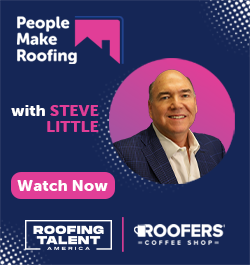


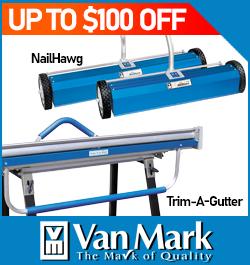
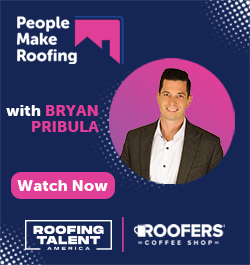








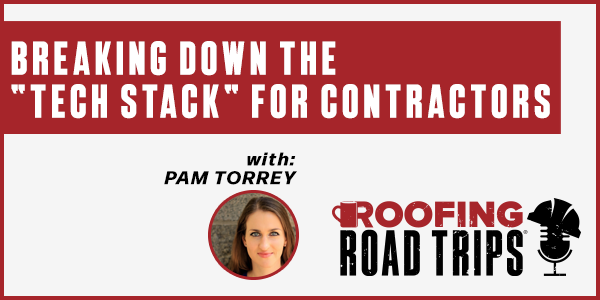
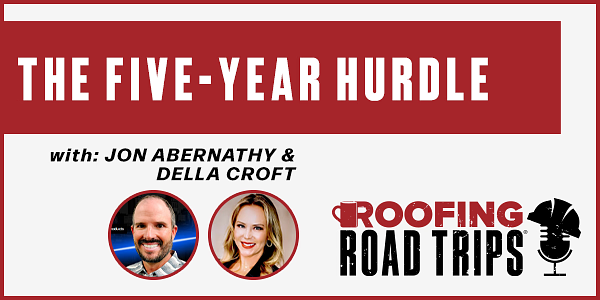
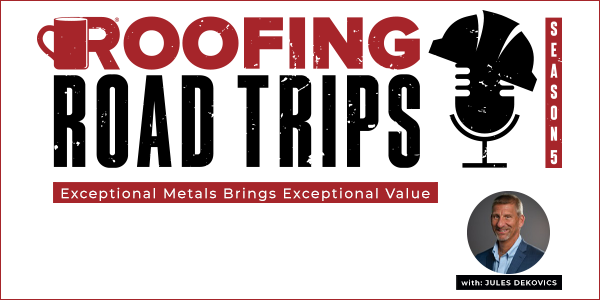
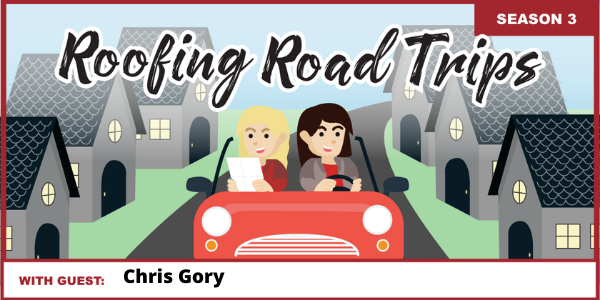

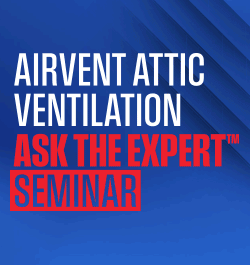




Comments
Leave a Reply
Have an account? Login to leave a comment!
Sign In